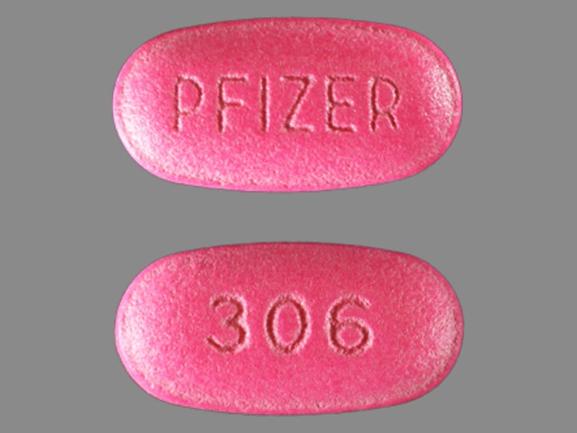Zithromax Disease Interactions
There are 4 disease interactions with Zithromax (azithromycin).
Antibiotics (applies to Zithromax) colitis
Major Potential Hazard, Moderate plausibility. Applicable conditions: Colitis/Enteritis (Noninfectious), Infectious Diarrhea/Enterocolitis/Gastroenteritis
Clostridioides difficile-associated diarrhea (CDAD), formerly pseudomembranous colitis, has been reported with almost all antibacterial drugs and may range from mild diarrhea to fatal colitis. The most common culprits include clindamycin and lincomycin. Antibacterial therapy alters the normal flora of the colon, leading to overgrowth of C difficile, whose toxins A and B contribute to CDAD development. Morbidity and mortality are increased with hypertoxin-producing strains of C difficile; these infections can be resistant to antimicrobial therapy and may require colectomy. CDAD must be considered in all patients who present with diarrhea after antibacterial use. Since CDAD has been reported to occur more than 2 months after antibacterial use, careful medical history is necessary. Therapy with broad-spectrum antibacterials and other agents with significant antibacterial activity should be administered cautiously in patients with history of gastrointestinal disease, particularly colitis; pseudomembranous colitis (generally characterized by severe, persistent diarrhea and severe abdominal cramps, and sometimes associated with the passage of blood and mucus), if it occurs, may be more severe in these patients and may be associated with flares in underlying disease activity. Antibacterial drugs not directed against C difficile may need to be stopped if CDAD is suspected or confirmed. Appropriate fluid and electrolyte management, protein supplementation, antibacterial treatment of C difficile, and surgical evaluation should be started as clinically indicated.
Azithromycin (applies to Zithromax) liver disease
Major Potential Hazard, Moderate plausibility. Applicable conditions: Biliary Obstruction
Azithromycin is contraindicated in patients with a history of cholestatic jaundice/hepatic dysfunction associated with prior use of azithromycin. Azithromycin is primarily eliminated by biliary excretion; however, the pharmacokinetics of azithromycin have not been established in patients with liver dysfunction. Therapy with azithromycin should be administered cautiously in patients with liver and/or biliary disease. Abnormal liver function, hepatitis, cholestatic jaundice, hepatic necrosis, and hepatic failure have been reported, with some fatal cases. Treatment should be discontinued immediately if signs/symptoms of hepatitis occur.
Azithromycin (applies to Zithromax) QT prolongation
Moderate Potential Hazard, Moderate plausibility. Applicable conditions: Magnesium Imbalance, Arrhythmias, Congestive Heart Failure, Hypokalemia
Prolonged cardiac repolarization and QT interval have been reported in patients receiving treatment with azithromycin. Providers should consider the risk of QT prolongation, which can be fatal, when weighing the risks and benefits of azithromycin for at-risk patients including: patients with known prolongation of the QT interval, history of torsades de pointes, congenital long QT syndrome, bradyarrhythmias, or uncompensated heart failure; patients with ongoing proarrhythmic conditions such as uncorrected hypokalemia or hypomagnesemia, clinically significant bradycardia, or receiving other drugs that prolong the QT interval.
Macrolide antibiotics (applies to Zithromax) myasthenia gravis
Moderate Potential Hazard, Moderate plausibility.
The use of macrolide antibiotics has been reported to exacerbate symptoms of myasthenia gravis and trigger new onset of symptoms of myasthenic syndrome. Therapy with these agents should be administered cautiously in patients with a history of myasthenia gravis.
Switch to professional interaction data
Zithromax drug interactions
There are 382 drug interactions with Zithromax (azithromycin).
More about Zithromax (azithromycin)
- Zithromax consumer information
- Check interactions
- Compare alternatives
- Pricing & coupons
- Reviews (129)
- Drug images
- Side effects
- Dosage information
- Patient tips
- During pregnancy
- Generic availability
- Support group
- Drug class: macrolides
- Breastfeeding
Related treatment guides
Drug Interaction Classification
| Highly clinically significant. Avoid combinations; the risk of the interaction outweighs the benefit. | |
| Moderately clinically significant. Usually avoid combinations; use it only under special circumstances. | |
| Minimally clinically significant. Minimize risk; assess risk and consider an alternative drug, take steps to circumvent the interaction risk and/or institute a monitoring plan. | |
| No interaction information available. |
See also:
Further information
Always consult your healthcare provider to ensure the information displayed on this page applies to your personal circumstances.


